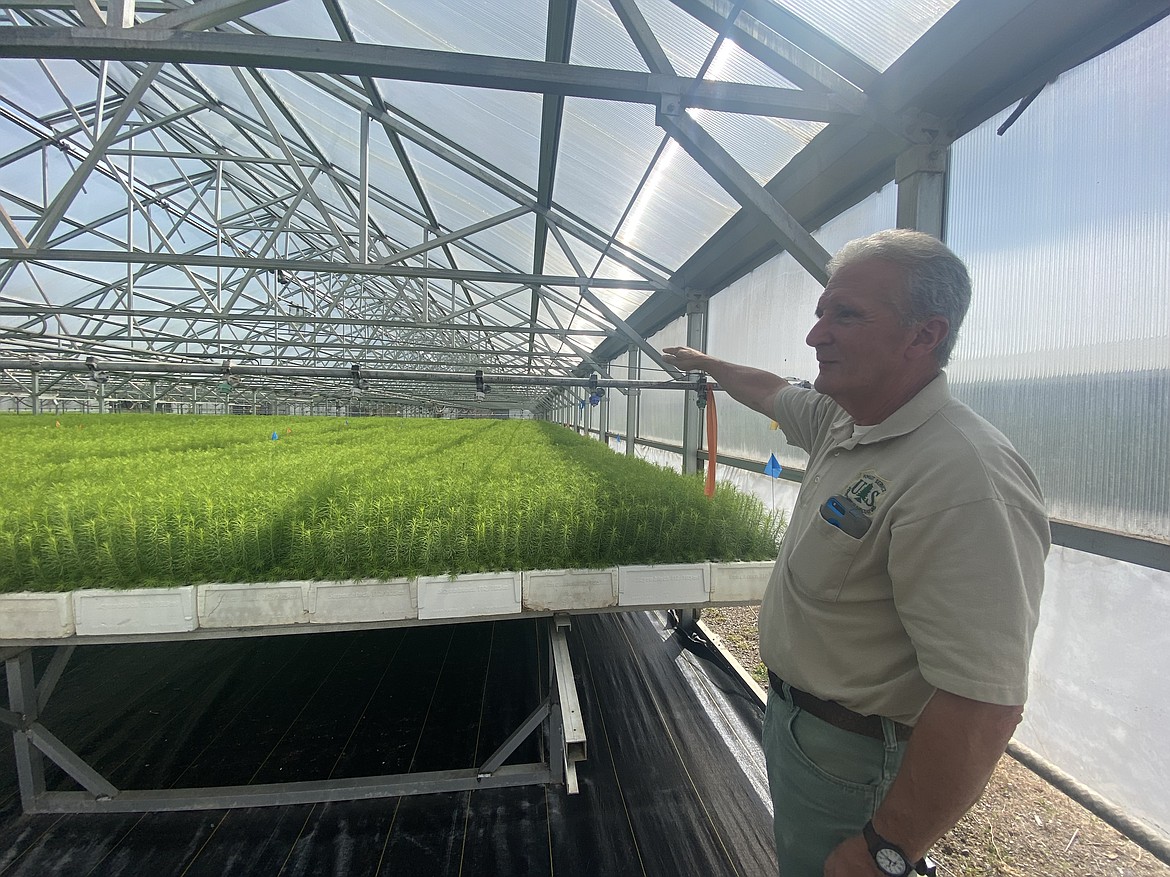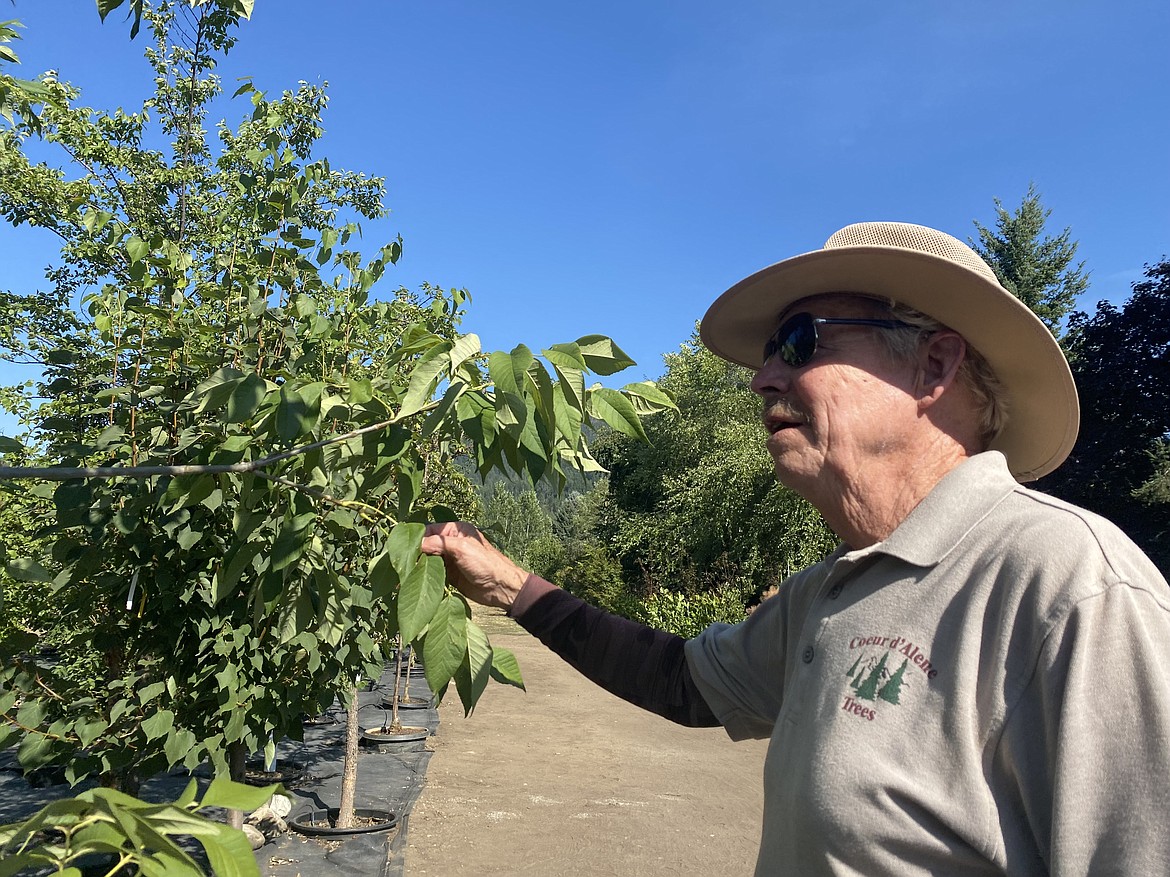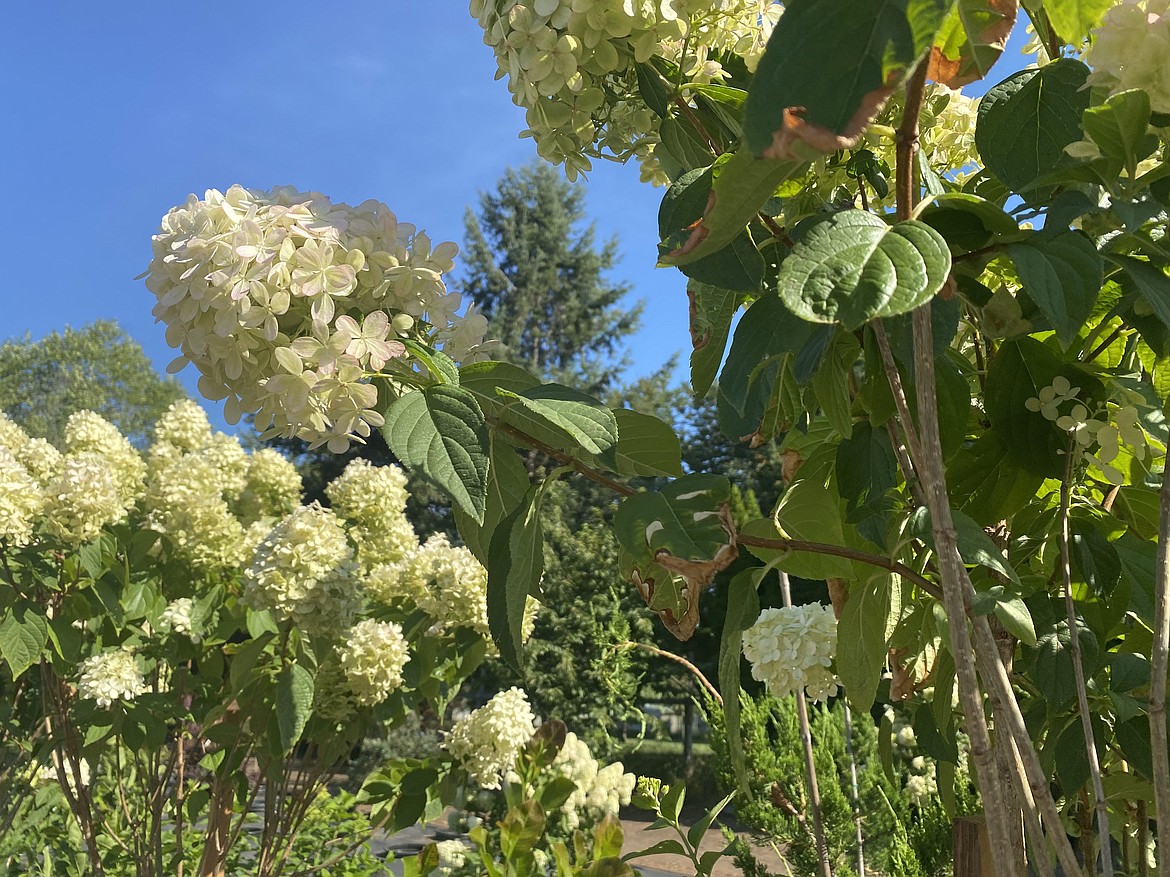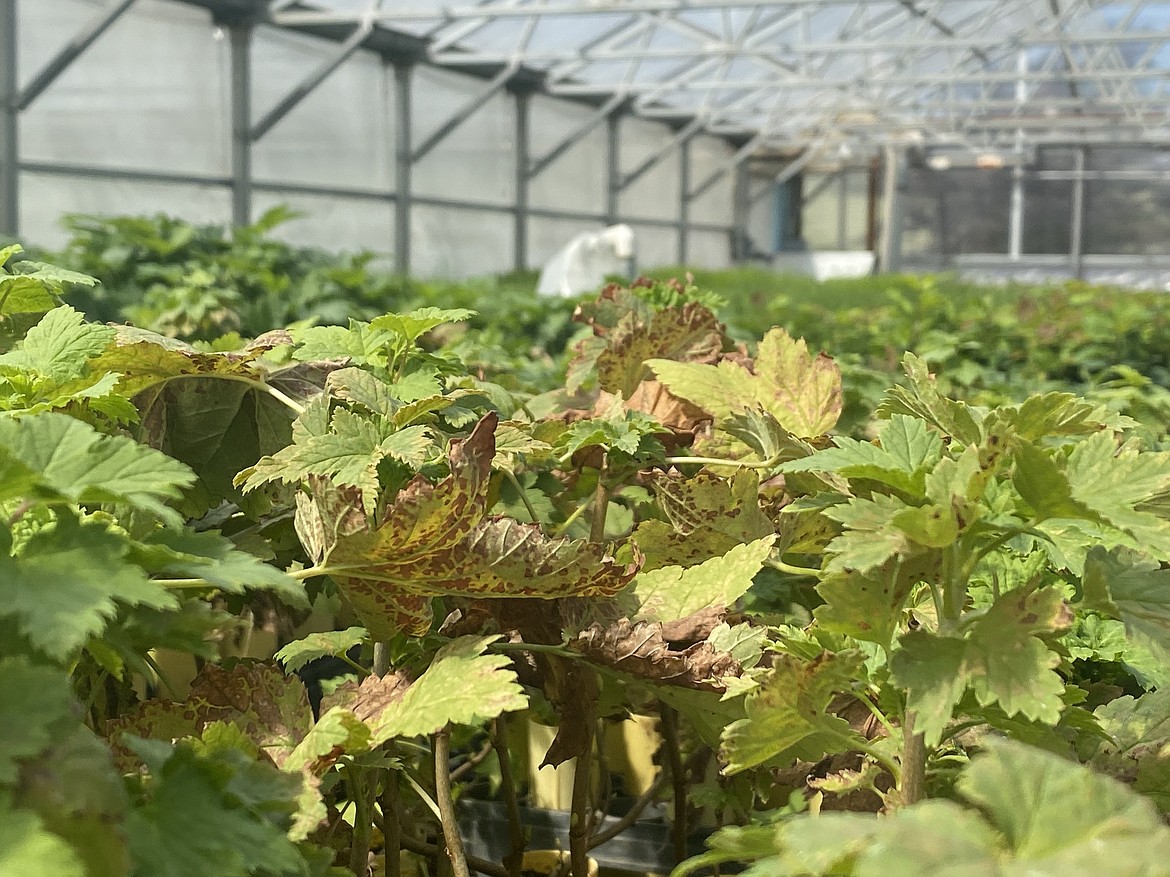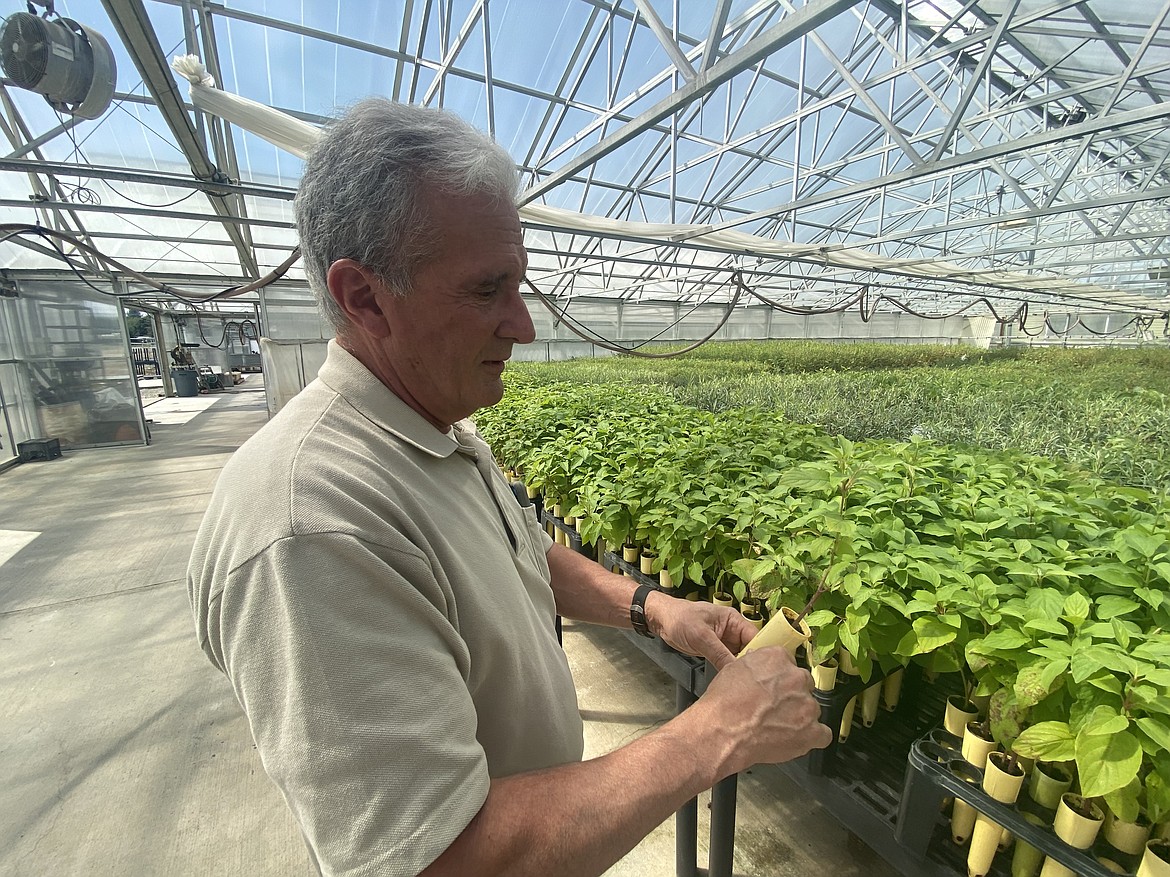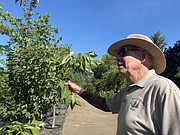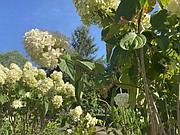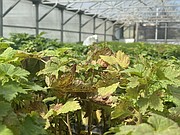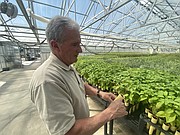Blistering hot summer unkind to trees
Summer conditions in Kootenai County have been enough to make humans and plants wilt.
Still, the demand for lush green trees hasn't faltered as nurseries prepare their saplings for harvest.
CDA Trees, a local nursery off 15th Street in Dalton Gardens, specializes in shade and flowering trees like Autumn Blaze Maple and Kwanzan Ornamental Cherry.
Mark Fisher, who has owned and operated CDA Trees with his wife for over 16 years, spends his days monitoring the nursery's 500 saplings. With 50 different species to offer, Fisher said he predominantly sells to landscape and construction companies.
"We're a retail outlet, so most of our customers are people who are building houses or want to redo the landscape of their home that they've been in for 10 years," Fisher said.
Before switching paths in 2004, Fisher's career revolved around landscape design and construction. Saplings at CDA Trees are grown through a pot system and drip irrigation, Fisher explained.
By using the pot system, trees are planted in two containers — the liner and the socket — before entering the earth, which Fisher said helps maintain root temperature.
"It keeps them cool in the summer and warm in the winter," he said as he checked on an American Mountain Ash.
The weeklong stretch of 100-degree temperatures in June and abnormally dry spring left much of the Gem State in a drought. So far, Coeur d'Alene has experienced more than 50 days of temperatures at or above 90 degrees.
"The heat has been killer on these trees," Fisher said. "We don't normally get many days over 100 degrees with 25 miles per hour wind. That presents a challenge to keep everything hydrated and looking good."
Despite several trees exhibiting signs of sunburn, Fisher said his crop of mainly flowering and shade trees is proving resilient. Some are faring better than others, Fisher noted. The limelight hydrangeas, named after the pale greenish-yellow color the petals reflect, are one species that Fisher noted were "hit the hardest" by the sun's rays.
"Even though we're watering them twice a day, nearly 10% of the leaves got burned," he said. "Sunburns discolor the leaves and kill them. They look pretty bad. There's not much you can do about it but cut them off."
Fisher's most popular selling season is in the spring due to many of his species' flowering properties. He doesn't expect Coeur d'Alene's weather to impact buyer demand and even noted that several trees in his lot are already spoken for.
Drought and strong winds have the most influence on plant health, Coeur d'Alene Nursery Superintendent Aram Eramian explained.
"Drought is bad, especially in this environment," Eramian said. "Out in the woods, we're probably going to see greater losses in seedlings that were planted this spring. No seedling would stand up to this long span of dry weather."
Eramian noted two-year-old seedlings planted in the outdoor fields likely braved much of the direct sunlight and winds.
As a branch of the U.S. Forest Service and U.S. Department of Agriculture, the Coeur d'Alene Nursery is a leader in reforestation and restoration efforts across the Northwest. Spanning over 200 acres and 23 greenhouses, the facility grows about 5 million seedlings annually.
Plants grown at the nursery are primarily used to restore areas impacted by logging and wildfires, Eramian said. The National Interagency Fire Center has reported over 10,000 North Idaho acres have burned in 2021, with blazes like the Character and Trestle Creek Complex still uncontained.
Since the nursery started operations in 1960, Eramian noted the number of seedlings grown by the facility's 28 employees has dropped from 20 million to about 5 million annually.
"Slowdown in timber harvest in the early '90s and 2000s meant the number of trees needed for reforestation was less. So we switched and started picking up other species like shrubs and grasses," he said. "That filled the gap for a while, but now numbers are going back up."
There are several theories why tree sampling numbers are growing, the superintendent said. One is increased timber harvesting — the other, wildfires. In May, Director of Forest and Rangeland Management and Vegetation Ecology for the Forest Service David Lytle said the latter is becoming the dominant influence.
"We have seen on national forests a really dramatic shift in what is driving reforestation," said Lytle. "Now over 80% of reforestation needs are being driven by wildfire."
Lytle said that of the 1.3 million acres of Forest Service land anticipated for reseeding in May, 145,000 acres — or about 10% — were here in Idaho.
After a fire, Eramian said, the Burned Area Emergency Response (BAER) program evaluates the burned area to determine treatment needs like tree reseeding.
"After the BAER team assesses the forest after all these fires happening now, they will come back to us with a plan," Eramian said. "That request could be 10,000 seedlings from the XYZ species to restore one place and another 15,000 for another."
The number of seedlings requested by partnering agencies is starting to pick up, Eramian said, and his team is ready to assist restoration efforts as more lands burn from wildfires in 2021. Greenhouses on-site are home to the millions of saplings already being groomed for rehabilitating Northwest landscapes this year.
"About 150,000 to 180,000 of these are going out to various forests in Bureau of Land Management projects in northern Idaho and western Montana," Eramian said as he entered the massive structure filled with western red cedar.
As he walked through the buildings, Eramian pointed out rows of Engleman's spruce being prepared for high-elevation forests in Colorado to refill areas lost due to fire in 2020. Next up are Douglas fir for Snoqualmie Pass and other federal highways, and water birch for Englishman's Pointe.
"We'll have to wait and see what is needed when this is over," Eramian said.

